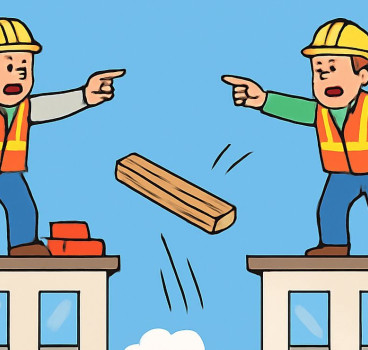The Line and its potential impact on global construction
Saudi Arabia’s NEOM project is reshaping the conversation around urban planning, sustainability and global resource demands. This futuristic city aims to redefine the urban landscape, presenting an ambitious vision of a zero-emission, hyper-connected world. However, alongside its forward-thinking design comes an immense demand for construction materials—particularly steel. Recent reports suggest that this new mega city could require up to 20% of the world’s steel production, a staggering claim that raises questions about its impact on global material markets, prices and availability, writes John Ridgeway.
The new mega city – or The Line as it is known - is part of the $500 billion NEOM project, a vast new city that will stretch for 170 kilometres across Saudi Arabia’s northwest region. Designed as a zero-carbon, sustainable urban environment, it is intended to house nine million people in two parallel buildings rising 500 metres above sea level. Each building is expected to be lined with mirrors and will rely on renewable energy sources, such as wind and solar, to power its infrastructure.
The project’s vision is ambitious, but the scale is almost unfathomable. Building a city of this magnitude requires massive amounts of materials. Recent reports suggest that The Line alone could require a significant portion of the global supply of steel—up to 20% of annual production. This revelation was made by NEOM's chief investment officer during an interview with Arabian Gulf Business Insight, stating that NEOM is set to become the largest consumer of construction materials globally for possibly decades to come.
Steel is a core component in construction, offering strength and durability. Globally, around 1.9 billion metric tons of steel are produced annually. For NEOM's The Line to require 20% of that production means it could consume approximately 380 million metric tons of steel over the project's lifespan—a quantity almost equal to the annual production of major steel-producing countries like India and the United States.
The sheer scale of this demand is bound to have ripple effects across global markets. Increased demand often leads to higher prices. NEOM's consumption of vast quantities of steel could drive up prices globally, especially as the project gains momentum. Steel prices are already volatile due to several factors, including post-pandemic recovery, supply chain disruptions and fluctuating raw material costs. Adding a project of NEOM’s scale to the mix could push prices higher, impacting global construction projects.
NEOM’s demand for materials will not only affect prices—it could also strain global supply chains. The project’s enormous resource needs could lead to material shortages, particularly if suppliers struggle to keep up with NEOM's needs while still meeting existing commitments. In addition to steel, other essential materials like concrete, glass and aluminium will also be in high demand, further straining global supply chains.
Countries with burgeoning construction sectors, particularly in emerging markets, could face challenges. Rising material costs and shortages could hinder development projects in nations that rely on affordable materials for housing, infrastructure and urbanisation.
The broader picture
While steel grabs the headlines, it’s important to consider the other materials needed for a project of this magnitude. Concrete production is another area where NEOM will significantly impact global supplies. Saudi Arabia is already ramping up production by opening new concrete manufacturing facilities to meet the demand. This is a strategic move, given that NEOM’s vision of sustainable and resilient structures relies heavily on robust concrete solutions.
The production of concrete is energy-intensive, requiring significant amounts of raw materials like cement and aggregate. NEOM's vast construction needs will increase demand for these components, potentially leading to regional shortages or price increases in other parts of the world.
NEOM’s mirrored façade design for The Line and its emphasis on energy efficiency will also require vast amounts of high-performance glass. This glass will need to be thermally efficient and resilient to withstand the harsh desert climate, while also supporting the aesthetic vision of the project. As demand for this specialised glass increases, manufacturers may struggle to supply both NEOM and other major global projects, further driving up prices.
A key theme in NEOM's design is sustainability. Saudi Arabia aims to position NEOM as a global leader in green urban development. However, the resource intensity of The Line raises questions about the environmental impact of sourcing such large quantities of materials.
As the global construction industry pushes for greener practices, NEOM may incorporate recycled materials into its designs. Green steel, produced with reduced carbon emissions through the use of hydrogen or renewable energy, could be an option to lower the project’s environmental footprint. However, these sustainable practices are still in the early stages of adoption worldwide and the infrastructure to produce green steel at such a scale may not yet be in place to meet NEOM's demands.
NEOM could also lead the way in demonstrating how to integrate circular economy principles in megaprojects. By reusing and recycling construction materials wherever possible, it could reduce the strain on supply chains while setting a precedent for future large-scale developments.
While NEOM aims to be a zero-carbon city once completed, the construction phase will still have significant carbon emissions due to the massive amount of materials needed, particularly steel and concrete, which are notoriously carbon-heavy to produce. This is a growing concern in the construction industry, where reducing emissions during the building phase is becoming just as important as operational sustainability.
The future of global construction materials
As NEOM moves forward, its demands on global construction materials will undoubtedly shape the future of the industry. For example, with NEOM consuming such a large portion of global steel and other materials, governments and international organisations may need to step in to regulate the flow of resources. This could take the form of tariffs, quotas, or other measures designed to ensure that other countries and industries can still access the materials they need.
Furthermore, as supply chains come under pressure, companies may be forced to innovate in order to meet NEOM’s needs while maintaining service to other clients. This could accelerate the adoption of advanced technologies like 3D printing, modular construction and alternative materials, all of which could help ease the strain on traditional building resources.
On a positive note, NEOM's material demands could spur new investments in steel and concrete production facilities around the world. Countries that traditionally import these materials may look to establish local production in order to reduce dependency on global supply chains, which could lead to the rise of new players in the construction materials market.
For smaller construction projects, especially in developing countries, the increased cost and reduced availability of materials like steel and concrete could slow down progress. Governments may need to implement subsidy programmes or other measures to ensure that critical infrastructure projects are not delayed due to material shortages.
There is no doubt that NEOM's The Line represents an extraordinary chapter in urban development, but its sheer scale and material demands raise significant questions about the future of construction materials. If the project’s steel consumption really does account for 20% of global production, it will have far-reaching consequences, from rising prices and strained supply chains to possible technological innovations and regulatory interventions.
While NEOM holds promise as a beacon of sustainable, futuristic living, its construction phase presents challenges that will reverberate across the global construction industry. As cities worldwide push for greener, smarter development, the lessons learned from NEOM’s material consumption and resource management strategies could shape the future of urban design for decades to come. However, the strain it places on material availability and costs may also have negative effects, particularly on smaller projects and developing economies. Balancing innovation with sustainability and resource allocation will be key as NEOM forges ahead.
Additional notes
The NEOM megacity project in Saudi Arabia, including The Line, is part of the country's Vision 2030 initiative aimed at diversifying its economy and reducing reliance on oil revenues. Construction of The Line officially began in 2021, with significant groundwork, including the placement of over 30,000 piles to form the foundation, expected to be completed by the end of 2024. This initial phase will cover about 2.4 kilometres by 2030, though the long-term goal is to extend the city to 170 kilometres.
The Line is envisioned as a zero-carbon, car-free vertical city that will eventually house up to 9 million people. It is intended to revolutionise urban living by offering essential services within a five-minute walk, while conserving 95% of NEOM’s surrounding nature. The project also includes a hyper-rail system for fast, sustainable travel, powered by renewable energy sources.
The massive investment in NEOM (over $500 billion allocated) is part of Saudi Arabia’s ambition to lead the way in sustainable urban development and global innovation. It aims to create a new model for future cities by addressing issues such as climate change, urban sprawl, and social inequalities. The city will operate entirely on renewable energy, reducing its environmental footprint.
Additional Blogs

Construction’s obsession with blame instead of learning
Construction is one of the most technically advanced industries in the built environment, yet culturally it often behaves like one of the least reflective. When things go wrong and they frequently...
Read moreHow risk Is routinely pushed down the supply chain
Risk is an unavoidable part of construction. Every project involves uncertainty around ground conditions, weather, design coordination, procurement, labour and programme. Yet while risk is inherent,...
Read more

What if Building Control went fully digital?
Building control governs structural integrity, fire protection, energy efficiency, accessibility and countless other aspects of design and construction. Historically, this process has been highly...
Read more